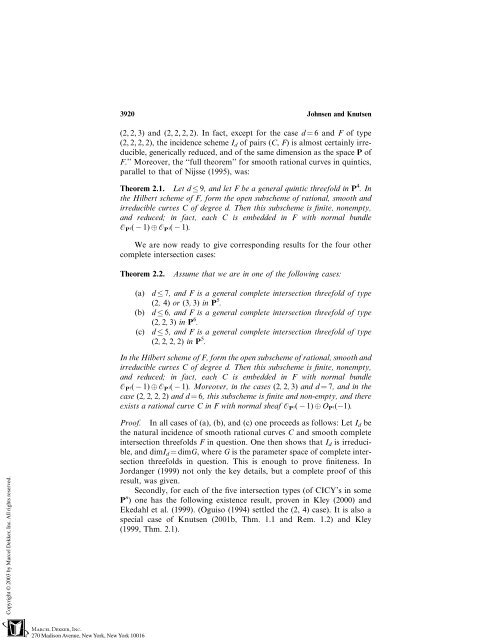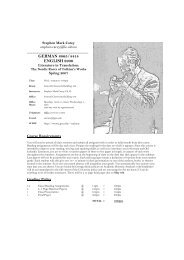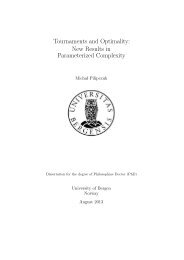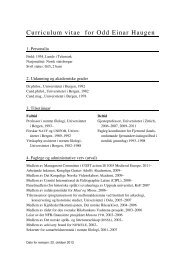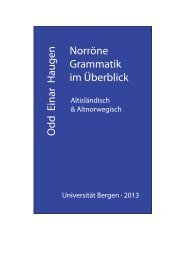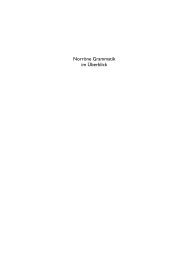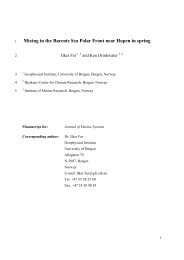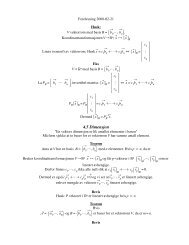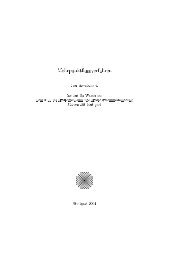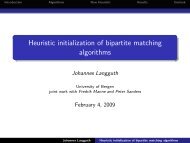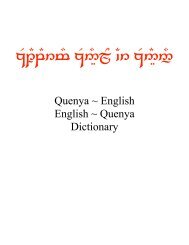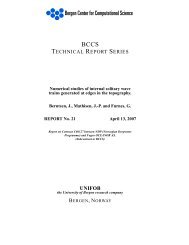Rational Curves in Calabi-Yau Threefolds
Rational Curves in Calabi-Yau Threefolds
Rational Curves in Calabi-Yau Threefolds
You also want an ePaper? Increase the reach of your titles
YUMPU automatically turns print PDFs into web optimized ePapers that Google loves.
3920 Johnsen and Knutsen<br />
(2, 2, 3) and (2, 2, 2, 2). In fact, except for the case d ¼ 6 and F of type<br />
(2, 2, 2, 2), the <strong>in</strong>cidence scheme Id of pairs (C, F) is almost certa<strong>in</strong>ly irreducible,<br />
generically reduced, and of the same dimension as the space P of<br />
F.’’ Moreover, the ‘‘full theorem’’ for smooth rational curves <strong>in</strong> qu<strong>in</strong>tics,<br />
parallel to that of Nijsse (1995), was:<br />
Theorem 2.1. Let d 9, and let F be a general qu<strong>in</strong>tic threefold <strong>in</strong> P 4 .In<br />
the Hilbert scheme of F, form the open subscheme of rational, smooth and<br />
irreducible curves C of degree d. Then this subscheme is f<strong>in</strong>ite, nonempty,<br />
and reduced; <strong>in</strong> fact, each C is embedded <strong>in</strong> F with normal bundle<br />
1( 1) OP1( 1).<br />
OP<br />
We are now ready to give correspond<strong>in</strong>g results for the four other<br />
complete <strong>in</strong>tersection cases:<br />
Theorem 2.2. Assume that we are <strong>in</strong> one of the follow<strong>in</strong>g cases:<br />
(a) d 7, and F is a general complete <strong>in</strong>tersection threefold of type<br />
(2, 4) or (3, 3) <strong>in</strong> P 5 .<br />
(b) d 6, and F is a general complete <strong>in</strong>tersection threefold of type<br />
(2, 2, 3) <strong>in</strong> P 6 .<br />
(c) d 5, and F is a general complete <strong>in</strong>tersection threefold of type<br />
(2, 2, 2, 2) <strong>in</strong> P 5 .<br />
In the Hilbert scheme of F, form the open subscheme of rational, smooth and<br />
irreducible curves C of degree d. Then this subscheme is f<strong>in</strong>ite, nonempty,<br />
and reduced; <strong>in</strong> fact, each C is embedded <strong>in</strong> F with normal bundle<br />
O P 1( 1) O P 1( 1). Moreover, <strong>in</strong> the cases (2, 2, 3) and d ¼ 7, and <strong>in</strong> the<br />
case (2, 2, 2, 2) and d ¼ 6, this subscheme is f<strong>in</strong>ite and non-empty, and there<br />
exists a rational curve C <strong>in</strong> F with normal sheaf OP1( 1) OP1( 1).<br />
Proof. In all cases of (a), (b), and (c) one proceeds as follows: Let Id be<br />
the natural <strong>in</strong>cidence of smooth rational curves C and smooth complete<br />
<strong>in</strong>tersection threefolds F <strong>in</strong> question. One then shows that Id is irreducible,<br />
and dimId ¼ dimG, where G is the parameter space of complete <strong>in</strong>tersection<br />
threefolds <strong>in</strong> question. This is enough to prove f<strong>in</strong>iteness. In<br />
Jordanger (1999) not only the key details, but a complete proof of this<br />
result, was given.<br />
Secondly, for each of the five <strong>in</strong>tersection types (of CICY’s <strong>in</strong> some<br />
P n ) one has the follow<strong>in</strong>g existence result, proven <strong>in</strong> Kley (2000) and<br />
Ekedahl et al. (1999). (Oguiso (1994) settled the (2, 4) case). It is also a<br />
special case of Knutsen (2001b, Thm. 1.1 and Rem. 1.2) and Kley<br />
(1999, Thm. 2.1).


